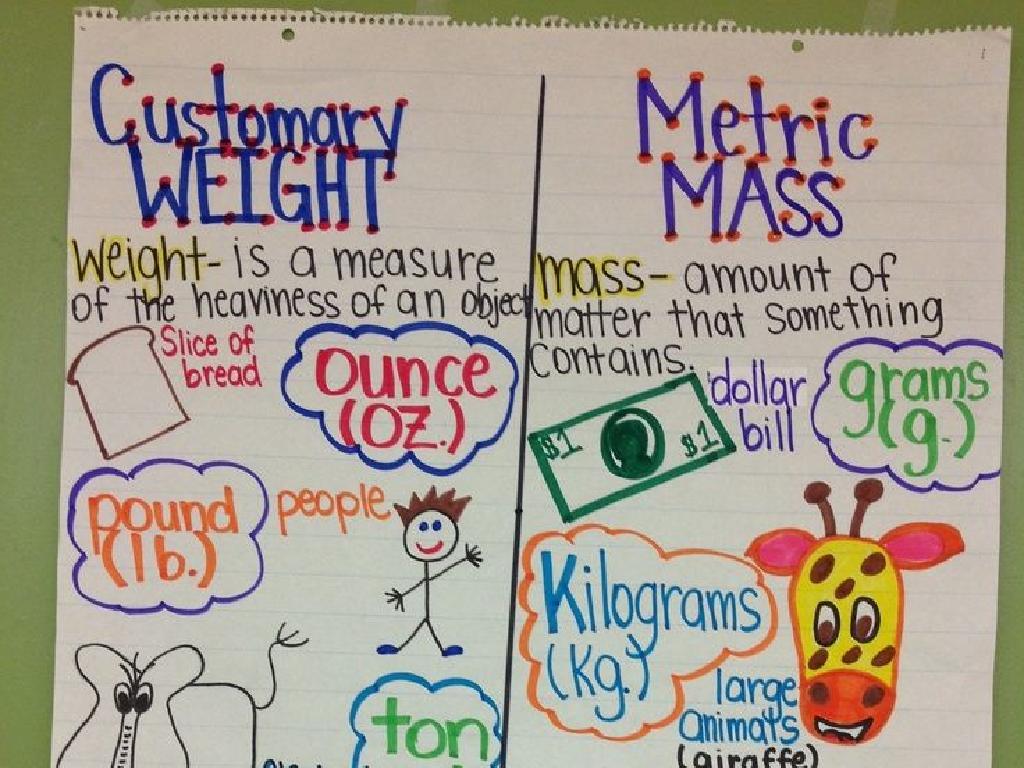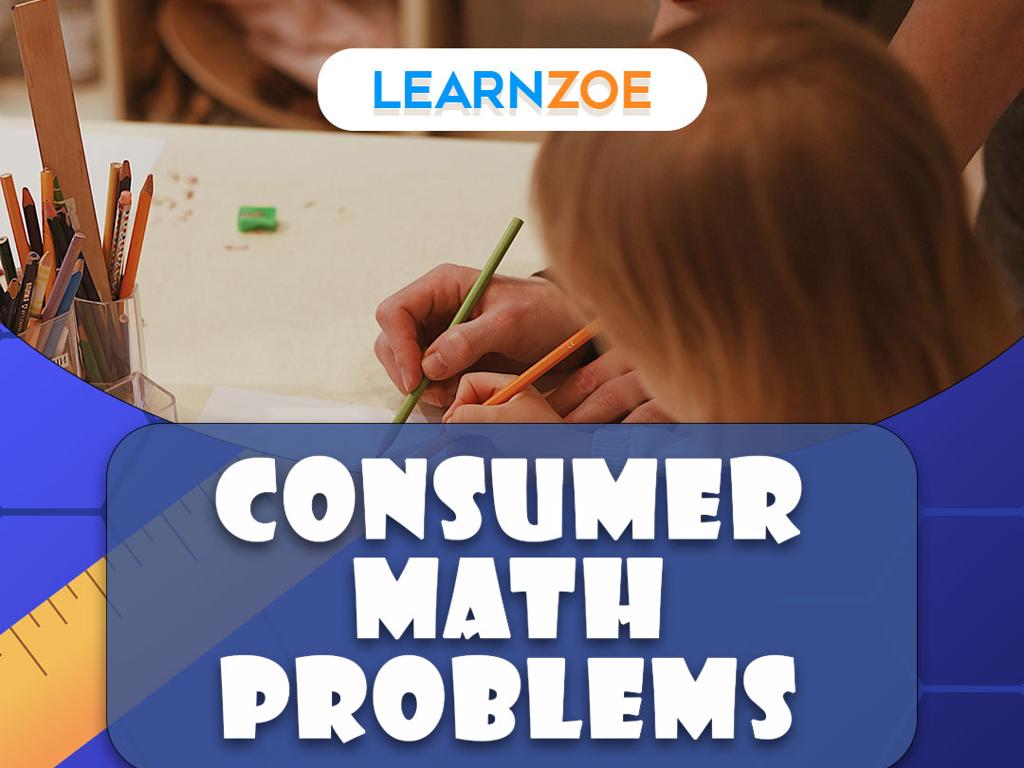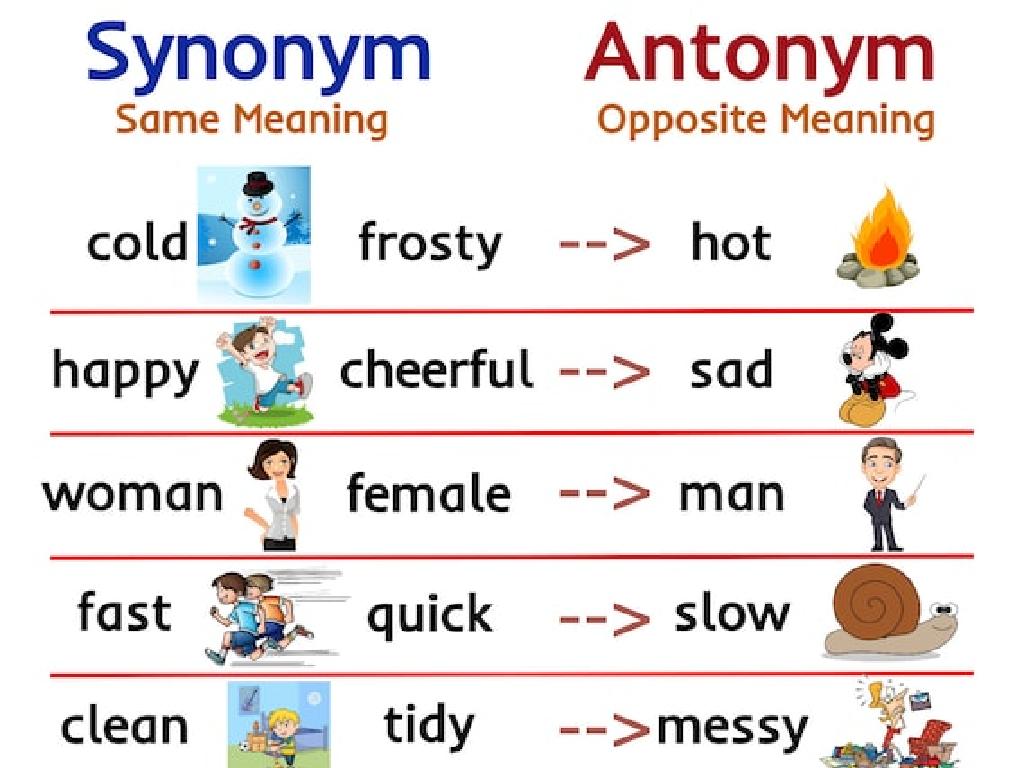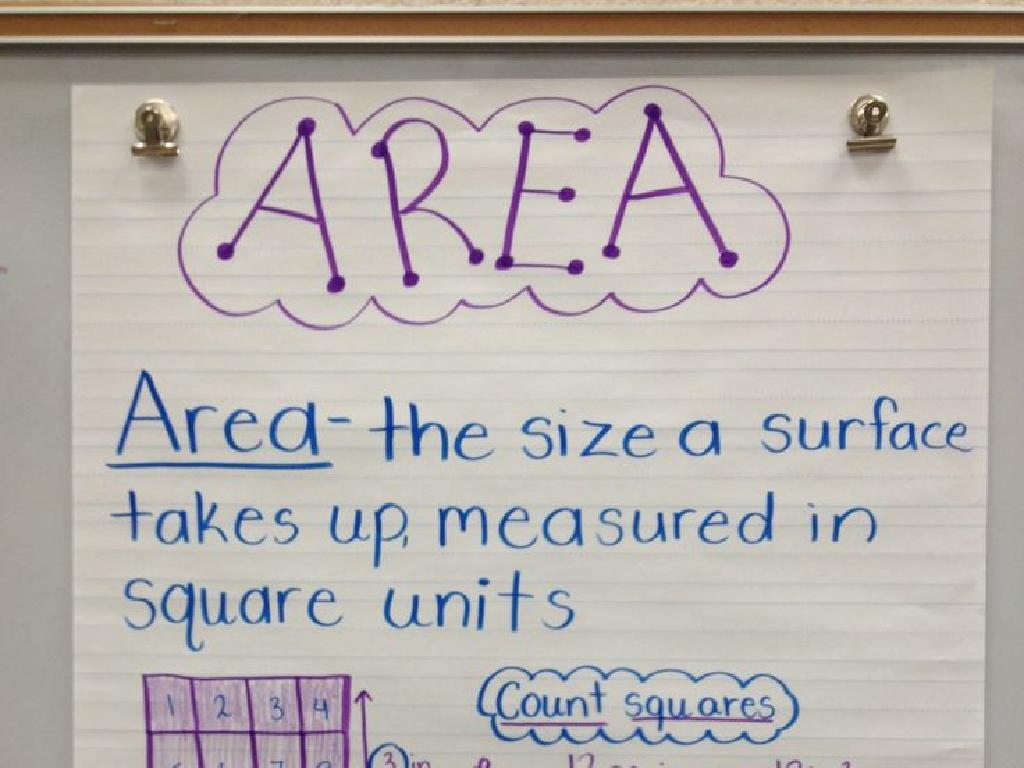Complete Addition And Subtraction Sentences
Subject: Math
Grade: Fifth grade
Topic: Addition And Subtraction
Please LOG IN to download the presentation. Access is available to registered users only.
View More Content
Mastering Addition and Subtraction
– Grasp basic addition and subtraction
– Adding and subtracting are key skills for solving everyday problems.
– Importance in foundational math
– These operations are the building blocks for all higher-level math.
– Real-world application of concepts
– Use in budgeting, cooking, or when sharing items among friends.
– Practice with examples
|
This slide introduces the fundamental concepts of addition and subtraction, aiming to solidify the students’ understanding of these basic operations. Emphasize that addition and subtraction are not just abstract concepts but essential tools used in everyday life, such as managing money or dividing things equally. Provide clear examples, such as adding up expenses or subtracting to make change, to illustrate their practical use. Encourage students to think of additional examples from their daily experiences. The slide should also prepare students for interactive activities where they will apply these operations in various scenarios to reinforce their skills.
Crafting Addition Sentences
– Understanding addition sentences
– An equation showing the sum of two or more addends
– Components: addends and sum
– Addends are numbers being added; the sum is the result
– Constructing custom addition sentences
– Use objects or scenarios to create new addition problems
|
This slide introduces the concept of addition sentences to fifth graders, emphasizing the structure and components of an addition sentence. Begin by explaining that an addition sentence is a mathematical way to represent the combining of two or more numbers, known as addends, to get a total, which is the sum. Illustrate with simple examples, like apples or pencils, to make it relatable. Then, guide students to create their own addition sentences using familiar items or situations, reinforcing the concept of addends and sum. Encourage them to think creatively and share their sentences with the class. This activity will help solidify their understanding of addition and prepare them for more complex math problems.
Understanding Subtraction Sentences
– Define a subtraction sentence
– A mathematical statement showing one quantity taken from another
– Identify parts of a sentence
– Minuend (total) – Subtrahend (amount taken) = Difference (remainder)
– Create your own sentences
– Use numbers to make real subtraction sentences
– Practice with examples
– Solve 15 – 7 = ? or 20 – ? = 13 to find the difference or subtrahend
|
This slide introduces the concept of subtraction sentences to fifth graders. Begin by defining a subtraction sentence and explaining that it is a way to represent taking away one number from another. Discuss the parts of a subtraction sentence: the minuend (the number we start with), the subtrahend (the number we take away), and the difference (the result after subtraction). Encourage students to create their own subtraction sentences using numbers they’re familiar with. Provide practice examples and ask students to identify the minuend, subtrahend, and difference, as well as solve for missing parts of the sentence. This activity will help solidify their understanding of subtraction and prepare them for more complex problems.
Completing Addition Sentences
– Finding the missing addend
– To find a missing number, use the sum and the known addend.
– Using reverse operations
– Subtract the known addend from the sum to find the missing number.
– Practice with examples
– Let’s solve 15 + ? = 24 and 42 + ? = 67 together.
|
This slide introduces students to the concept of completing addition sentences by finding missing addends. Start by explaining that an addend is a number that is added to another number. To find a missing addend, students can use the total sum and the known addend, applying reverse operations, which in this case is subtraction. Provide several examples and work through them as a class. Encourage students to explain their thought process as they solve each example. This will help solidify their understanding of the relationship between addition and subtraction and how they can be used to solve for unknowns in equations.
Completing Subtraction Sentences
– Finding missing subtrahend/minuend
– If 15 – ? = 9, what number goes in the question mark?
– Using addition to solve subtraction
– Reverse the problem: if 9 + ? = 15, what is the missing number?
– Practice subtraction with examples
– Example: 20 – ? = 12. Find the missing number using addition.
– Apply strategies to homework problems
|
This slide focuses on teaching students how to complete subtraction sentences by finding the missing subtrahend or minuend. Start by explaining the terms ‘subtrahend’ (the number being subtracted) and ‘minuend’ (the number from which another number is subtracted). Demonstrate how to find the missing number by using the inverse operation, addition. Provide several examples and guide students through solving them. Encourage students to use this strategy when they encounter similar problems in their homework, ensuring they understand the relationship between addition and subtraction. The goal is for students to become comfortable with these concepts and to apply them independently.
Solving Word Problems: Addition & Subtraction
– Apply skills to solve problems
– Identify keywords for operations
– Words like ‘total’ or ‘difference’ hint at the operation
– Class examples of word problems
– Work through problems step by step as a group
– Discuss solutions together
– Share different methods to find answers
|
This slide is aimed at reinforcing the students’ ability to solve word problems using addition and subtraction. Emphasize the importance of understanding the problem before attempting to solve it. Discuss how certain keywords can signal the required operation; for example, ‘altogether’ or ‘combined’ may indicate addition, while ‘left’ or ‘less than’ often suggest subtraction. Work through several examples as a class to demonstrate the thought process and problem-solving steps. Encourage students to participate and explain their reasoning. This interactive approach helps students learn from each other and gain confidence in their problem-solving abilities. Prepare a variety of problems to cater to different skill levels within the class.
Class Activity: Math Detective
– Transform into math detectives
– Solve addition & subtraction mysteries
– Use your skills to fill in the blanks: 7 + __ = 12 or 15 – __ = 8
– Pair up for clue-finding mission
– Work together to crack the problems
|
In this engaging class activity, students will pair up and act as math detectives to solve addition and subtraction problems. Provide students with incomplete math sentences and ask them to find the missing numbers. Encourage them to discuss their thought process with their partners and use logical reasoning to arrive at the correct answers. As a teacher, circulate the room to offer guidance and ensure that each pair is on the right track. Possible activities could include a worksheet with a series of problems, a scavenger hunt where each clue solved leads to the next, or a mystery story that can only be unraveled by solving math problems. The goal is to make math fun and interactive, reinforcing their arithmetic skills through cooperative problem-solving.
Conclusion and Review: Mastering Addition & Subtraction
– Recap key lesson concepts
– Address class activity questions
– Homework: Practice worksheet
– Complete sentences with missing numbers
– Encourage question submissions
– Submit any lingering questions before next class
|
This slide aims to wrap up the session by revisiting the main points of the lesson on completing addition and subtraction sentences. Encourage students to reflect on what they’ve learned and to bring up any uncertainties they encountered during the class activity. For homework, assign a worksheet that provides additional practice on the topic to reinforce their understanding. Remind students that mastering these concepts is crucial for their progress in math. Also, let them know they can submit any questions they might have before the next class, ensuring they receive the help they need to succeed.





